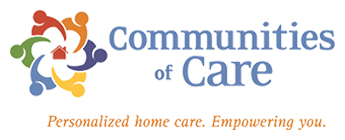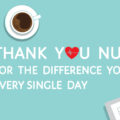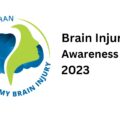What is Home Care?
Home care is a rising industry, but not many people understand what it is and how it works.
Home care is designed to help people remain independent and healthy in their homes and communities by providing services such as companion care, assistance with activities of daily living (ADL), medication management, and medical care. Without home care, many people would have to live in care facilities.
If you think you would benefit from help at home, first determine what kind of help you need:
- General assistance with daily activities such as shopping, cooking, and grooming – you would benefit from a personal care assistant or home health aide.
- Visits from a nurse to help with medications, wounds, respiratory care, IV/Port care, or other medical cares – you need Skilled Nurse Visits.
- A nurse to help with medical cares throughout the day or 24/7 – you need Hourly Nursing (called Home Care Nursing in Minnesota).
Overview of Types of Care
| What types of care will be provided? | Who can provide the care? | How long will I receive care? | Who pays for the care? | |
| Personal Care Assistance or Home Health Aide | Activities of daily living | Unlicensed personnel | Short term or Long term | · Medicaid/Medicare
· Private pay |
| Skilled Nurse Visit | Skilled cares which require training to perform | Licensed personnel – RN or LPN | Short term | · Medicaid/ Medicare
· Insurance plans · Long-term care plans · Private pay |
| Hourly Nursing/Private Duty Nursing | Skilled cares which require training to perform | Licensed personnel – RN or LPN | Long term | · Medicaid/Medicare
· Insurance plans · Private pay |
Personal Care Assistant/Home Health Aid (PCA/HHA)
Personal care or home health aide care is the most common type of home care available. PCA/HHA can help with the big category of activities called ADLs, which stands for Activities of Daily Living. This includes things like grooming, dressing, shopping, cooking, cleaning, making medical appointments, transportation, and getting around. (Technically, there are 2 lists of activities – ADLs and IADLs. PCAs can help with some things and HHAs can help with other things, but I won’t address that detail here. )
The biggest distinction about this type of care is that is it provided by an unlicensed person, meaning that it is not provided by a nurse or a person with a special education.
PCA/HHA can help for either short term needs or long term needs.
PCA and HHA do the same type of tasks; the difference is the payor source.
- PCA care is typically paid by Medicaid or private pay (out of pocket from patient).
- HHA is typically paid by Medicare.
- Neither are typically paid by an insurance plan, but it’s always worth checking.
Important note about the payor source: If the PCA/HHA is paid by Medicaid/Medicare or insurance, you must have a physician order to receive care. If you are paying for the care privately, you can direct your own care without a physician’s order.
| Who can provide the care? | Unlicensed personnel |
| What types of care? | Activities of daily living |
| How long will I receive care? | Short term or long term |
| Who pays for the care? | Medicaid, Medicare, private pay |
Skilled Nurse Visit (SNV)
The second most common type of care in a person’s home is called a Skilled Nurse Visit.
As the name suggests, the visit is performed by a licensed nurse, either a Licensed Practical Nurse (LPN) or Registered Nurse (RN).
The activities of a Skilled Nurse Visit can range from post-natal care to wound care to medication management. The tasks are provided by a nurse because they require medical training to perform the cares.
Skilled nurse visits are generally intended to be short-term in nature for a short-term condition.
- An individual visit is typically 1-2 hours long.
- Visits are typically once or twice per week.
- The duration of the scheduled visits can range from a single visit to several weeks or a few months.
Skilled nurse visits are typically paid by insurance plans, Medicaid/Medicare, long-term care plans, and private pay (out of pocket from patient).
Important note about the payor source: If the SNV is paid by Medicaid/Medicare or insurance, you must have a physician order to receive care. If you are paying for the care privately, you can direct your own care without a physician order, although most nurses will insist on having a doctor’s order to protect their license.
| Who can provide the care? | Licensed personnel – RN or LPN |
| What types of care? | Skilled cares which require training to perform: wound care, medication set-up, IV, injections, etc |
| How long will I receive care? | Short term |
| Who pays for the care? | Medicaid, Medicare, most insurance plans, long-term care plans, private pay |
Hourly Nursing/Home Care Nursing
The least common type of care in a person’s home is called Hourly Nursing or Home Care Nursing (HCN).
As the name suggests, the visit is performed by a licensed nurse, either a Licensed Practical Nurse (LPN) or Registered Nurse (RN).
The activities of an hourly nursing shift are typically clinically advanced, involving cares that cannot be performed by an unskilled/unlicensed person such as respiratory treatments, extended IV therapies, seizure management, tracheostomy/ventilator management, and other complex cares. The cares are provided by a nurse because they require medical training to perform them. Typically, the nurse must first make a clinical assessment of the client’s status, and then perform the cares required based on the assessment.
A HCN shift is typically 8-12 hours in length, and many HCN recipients require 24 hour nursing care. HCN is generally long-term in nature, authorized a year at a time for clients with long- term conditions. Some clients have PDN for many years, keeping them safe and healthy in their homes.
Hourly Nursing is typically paid by insurance plans and Medicaid. Hourly Nursing is much more costly than other services, so few people can afford private pay (out of pocket from patient). When hourly nursing is paid privately (out of pocket) it is called Private Duty Nursing.
Important note about the payor source: If the Hourly Nursing is paid by Medicaid or insurance, you must have a physician order to receive care. If you are paying for the care privately, you can direct your own care without a physician order, although most nurses will insist on having a doctor’s order to protect their license.
| Who can provide the care? | Licensed personnel – RN or LPN |
| What types of care? | Skilled cares which require training to perform |
| How long will I receive care? | Long term |
| Who pays for the care? | Medicaid, Medicare, insurance plans, private pay |
About the Author
Hi, I’m Joan Vaughn, the owner of Communities of Care, a Minnesota Home Care agency. I have experience in home care professionally and personally. In addition to owning a nursing agency, I have had nursing services in my own home, and I help manage Personal Care Attendants for my parents. I am active in home care legislation in Minnesota, and I am a founder of the Professional Home Care Associate. I know home care inside and out.
Disclaimers
The information in this document is provided for informational purposes only, based on my experience as a home care consume and business owner. It is not medical advice. It is not legal advice.
This paper describes home care in Minnesota, regulated by Minnesota Departments of Health and Human Services.
The information contained in this document is the proprietary and exclusive property of Communities of Care.











